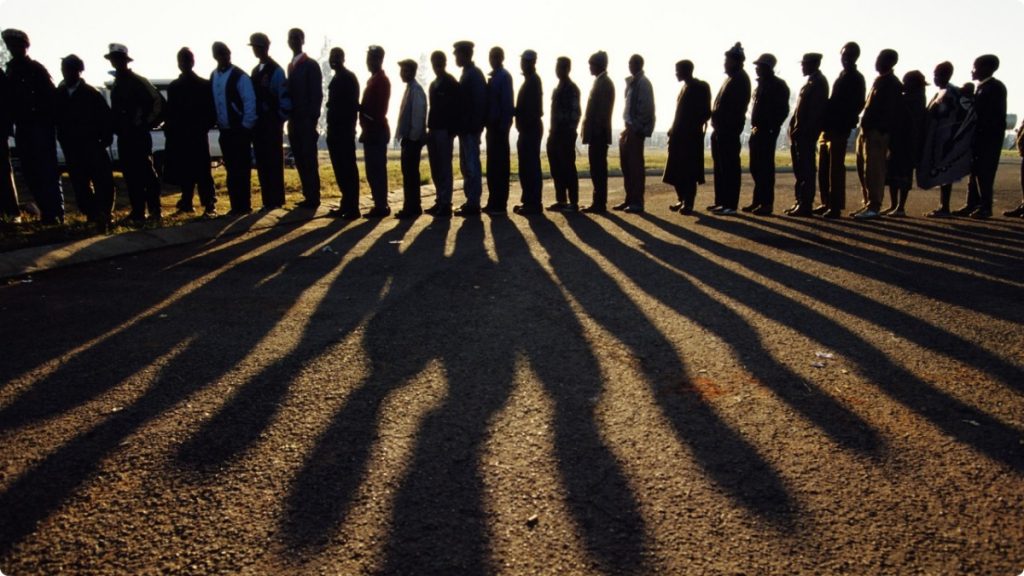A look at the greatest bell-curve of change and cultural upheaval that ever occurred in the United States from the author of the new book, Revolution and Renaissance: 1965 to 1975…

by: Daniel Forbes Hauser
Change will always be a part of our American way of life. Because we live in a free country, “change” is an automatic given. But evidence would suggest that the greatest bell-curve of change and cultural upheaval that ever occurred in our country’s history took place in the time-window of 1965 to 1975.
It was these years that witnessed numerous assassinations of key political figures. Unprecedented campus unrest. Protest marches. Sit-ins. The sexual revolution. Recreational drugs. A U.S. President and Vice President both forced to resign in disgrace. More than a dozen White House staff sent to prison. Woodstock. Viet Nam. Watergate. Demands for equal rights by various minority groups. More than 1100 domestic bombings. Yes, America was in a frenzy.
The root cause of this chaos can be attributed to three primary factors that crashed together in a “perfect storm” within our nation. What were they exactly? Let’s take a look at the Top 3…
Third was the Civil Rights Movement. African Americans were no longer willing to allow themselves to be treated as sub-human. Under the brave leadership of Dr. Martin Luther King, Stokely Carmichael, and Malcolm X, they organized marches and sat-in across the country, demanding equality, the right to vote, and access to an education. Every evening, television news reports brought these protest efforts directly into people’s living rooms. Families in northern and western states suddenly began to realize that Emancipation had not really created equality in the southern states. More and more people began to demand a change in those attitudes.
The second primary cause for this season of heightened cultural upheaval was the Viet Nam war. Never before had our military been engaged in such a confrontation. In our nation’s history, we had only known “geographic” war, where the battle lines were clear, and where it was equally clear who the enemy was. Viet Nam was a “psychographic” war, and our military was not trained in that arena, nor were we able to adapt. Back at home, America was torn apart by those citizens that wanted to be loyal and patriotic to our nation’s leaders, vs. those men and women that wanted an immediate end to the bloodshed. Banners saying “AMERICA – LOVE IT OR LEAVE IT” clashed against those that said “PEACE” or “COME HOME, AMERICA.” Frequent protest marches ranging is size from hundreds to more than 100,000 demanded that the war come to an end. It was not until 58,195 young men had sacrificed their lives in the rice paddies of Viet Nam that our Defense Department decided it was time to withdraw in humiliation.
But the #1 cause for this cultural storm was the age wave tsunami that we now call the “Baby Boomers.” More than 76 million babies were born in the years immediately following World War II. (And it is this demographic “tail” that continues to wag the “American dog” ever since.) Never before had we seen such a population surge in our country, nor will we ever again. College and university enrollments tripled in less than 10 years. Advertisers had to shift to address this explosion of new consumers.
Every teenager begins to rebel against his or her parents in varying degrees in an effort to establish their own independence. But as these young baby boomers came of age in the late ‘60s and early 70s in such overwhelming numbers, they found themselves striving to go against everything that their parents stood for. Different clothes. Different hairstyles. Rebellious music. Different morals, in the form of sexual freedom and recreational drugs. And different politics.
Protesting against the Establishment in the Viet Nam war gave these young people such an outlet. Demanding drastic changes in the rights for African Americans was energizing as well. This contagious activism birthed the movements of equal rights for many other minorities, including women, Hispanic migrant workers, Native Americans, gays, and even prisoners. America witnessed a radical counter-culture revolution in just a few years time.
Bertrand Russell said, “Change is scientific, but progress is ethical. Change is indubitable, whereas progress is a matter of controversy.” It has been 50 years since those historic events of 1965 to 1975 took place. Our nation now finds itself on the precipice of a different kind of revolution — one that could dwarf the Baby Boomers in terms of its ultimate impact. Our country chose to survive and flourish following that cultural revolution, but we now are approaching a philosophical revolution of greater proportion. The ramifications can be daunting.
Our United States are fractured by a diverging mindset of partisan identity. The political Left and Right no longer consider the opposition merely to be different, but rather consider them to be evil. Civil dialog has been replaced with vitriolic debate. Constructive solutions have been replaced with name-calling and accusations. Hatred in our nation is on the rise. Spokespersons for any cause seem to think their only resort is to raise the volume of their anger.
If we continue on that trajectory, our country will only move on an accelerating downward spiral toward self-inflicted destruction. Hate crimes have already begun in isolated corners, and will become more and more common-place. Selective assassinations will occur once again. Ultimately this will lead to a physical class-war.
The prevention lies with the American voter, and the choices they are given on their election ballot. Will we have leaders that truly seek solutions, that are willing to find middle-ground? Will character, truth, and the rule of law still matter? Our democracy now rests in this crucible.
America can survive — and flourish — once again, if we are willing.
Revolution and Renaissance: 1965 to 1975 by Daniel Forbes Hauser is now available in bookstores everywhere and at Amazon.





